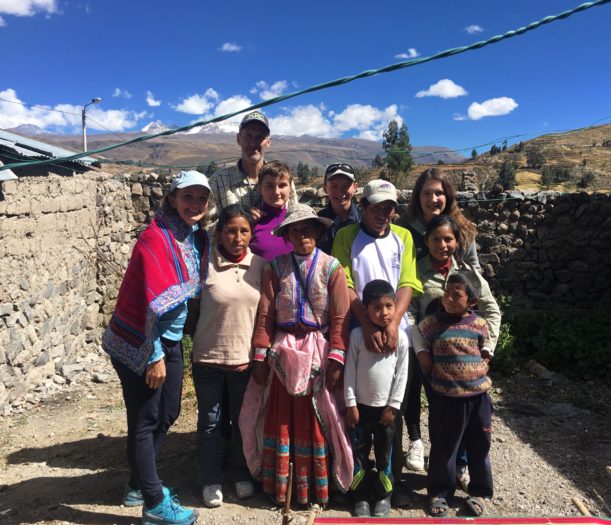 Sometimes you see more clearly from a different viewpoint. Xochitl (pronounced Sochi) Berns recently interned with Quechua Benefit for three months and gained new perspective on life for the Quechua people.
Sometimes you see more clearly from a different viewpoint. Xochitl (pronounced Sochi) Berns recently interned with Quechua Benefit for three months and gained new perspective on life for the Quechua people.
Xochitl has been breeding suri alpacas since she was 13 years old. She loves alpacas, the outdoors, and children and wanted to use her skills to volunteer for Quechua Benefit. Xochitl studies biology and Latin American studies at Reed College and hopes to pursue a career in wildlife conservation. She also speaks Spanish fluently, so she was well prepared for volunteering with Quechua Benefit.
For three months Xochitl worked at Casa Chapi and with our anemia campaign throughout the Colca Valley. She was also able to use her skill with alpacas to assist in Quechua Benefit’s alpaca health program. Before she went to Peru, she hoped that her presence would make a difference in the lives of children in a community that has touched her heart.
Now that she has experienced Peru firsthand, she says: “Peru is a beautiful country with so many unique sights. Travelers can enjoy these sights for their pleasure, but a woman of the Andes has to endure . . . the hardships these environments bring.
“Quechua Benefit works to ease and relieve those hardships in any way they can, starting at the roots of problem, like anemia or economic limitations. By volunteering for a nonprofit like QB, I get to appreciate the beauty of Peru as well as . . . have the opportunity to step in and help. Quechua Benefit’s efforts to help underserved communities of the Andes spread far and wide and they are appreciated and respected by many in Peru.
“It has been a great experience making such an impact in the lives of so many.”
Xochitl sees the vision: Improving literacy and the health among the Quechua children will break the cycle of poverty.
Thank you, Xochitl, for volunteering to create a brighter future for the people of the Colca Valley.
Your skills and passion can help the Quechua people, too. Just like Xochitl you can volunteer–either at home or in Peru. Check out more about opportunities here.


 Debra didn’t spend all her time with data on her trip. She enjoyed meeting kids and parents, and they loved getting to know her and see her technology. Debra stands 6’1” tall, and the kids thought she was a giant standing in the room with a 6’5” ceiling!
Debra didn’t spend all her time with data on her trip. She enjoyed meeting kids and parents, and they loved getting to know her and see her technology. Debra stands 6’1” tall, and the kids thought she was a giant standing in the room with a 6’5” ceiling! Today, Dale is the Executive Director of Quechua Benefit. He supervises three programs which are made possible by your generosity:
Today, Dale is the Executive Director of Quechua Benefit. He supervises three programs which are made possible by your generosity: Angie Kidd, pastor of Trinity Church United Methodist in Kendallville, Indiana,
Angie Kidd, pastor of Trinity Church United Methodist in Kendallville, Indiana, 
 in a real life environment made my experience unforgettable. Being a tourist in Peru is one thing, but living and interacting with these kids gave me a whole new perspective. I felt like an integral part in the development of Quechua Benefit as an organization, and more importantly, in the lives of children at both Casa Chapi Chivay and Arequipa.
in a real life environment made my experience unforgettable. Being a tourist in Peru is one thing, but living and interacting with these kids gave me a whole new perspective. I felt like an integral part in the development of Quechua Benefit as an organization, and more importantly, in the lives of children at both Casa Chapi Chivay and Arequipa. Chivay was the second stop on my family’s trip. The first being in the large city of Arequipa. Travel between the two required a three-hour bus ride over a 16,000’ mountain pass before a descent into the Colca Valley. Chivay is rural, the roads are dirt, and many homes have rocks placed strategically atop the roofs of the houses to keep the roofs on.
Chivay was the second stop on my family’s trip. The first being in the large city of Arequipa. Travel between the two required a three-hour bus ride over a 16,000’ mountain pass before a descent into the Colca Valley. Chivay is rural, the roads are dirt, and many homes have rocks placed strategically atop the roofs of the houses to keep the roofs on.